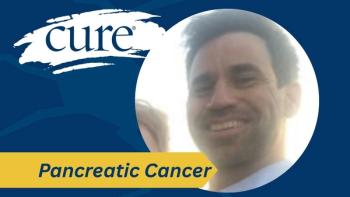
Experimental Treatment Shows Promise for Certain Cases of Advanced NSCLC
There is no approved treatment that targets the KRAS p.G12C mutation that drives some cancers like non-small cell lung cancer. But a recent study shows how the experimental drug sotorasib sparked responses in some patients with advanced non-small cell lung cancer that harbored the mutation.
The experimental drug sotorasib (AMG510) demonstrated promising antitumor activity in patients with non-small cell lung cancer (NSCLC) that harbors the KRAS p.G12C mutation, an aberration for which no targeted treatment has yet been approved, according to findings presented at the 2020 ESMO Virtual Congress and published simultaneously in the New England Journal of Medicine.
In a subgroup of the multicenter, phase I CodeBreaK100 trial that included 59 heavily pretreated patients with KRAS p.G12C-positive NSCLC, researchers found that 32.2% experienced a confirmed objective response, meaning disease that shrank or disappeared, and 88.1% experienced disease control, meaning they achieved either objective response or stable disease. The drug also had a favorable safety profile, Dr. David S. Hong, deputy chair of investigational cancer therapeutics at The University of Texas MD Anderson Cancer Center in Houston, said. Hong, the study’s lead author, shared the data in an oral presentation at the congress.
Outcomes of CodeBreaK100
The KRAS p.G12C mutation, which fuels cancer, occurs in 13% of NSCLCs, 3% to 5% of colorectal cancers and 1% to 3% of other cancers, Hong noted. Sotorasib, he said, is a first-in-class small molecule. It targets the mutated gene and prevents it from sending signals that would generate cancer-causing cell activity.
CodeBreaK100 included 129 patients: 59 with NSCLC, 42 with colorectal cancer and 28 with any of 11 other solid tumor types. Hong’s presentation at ESMO focused on the patients with NSCLC.
Those patients were divided into four groups, each of which received a different dose of the daily oral medication: 180 mg (three patients), 360 mg (16 patients), 720 mg (6 patients) and 960 mg (34 patients). Although tumor reduction was seen across all dose levels, 960 mg was determined to be tolerable and the most effective, and thus was studied in the trial’s expansion phase.
The main goal of the study was to test safety, with secondary goals including objective response rate (ORR), duration of response (DOR), disease control rate (DCR) and progression-free survival (PFS), meaning the length of time from the start of treatment until disease worsening. At a median follow-up of 11.7 months, 14 patients were still receiving treatment. Most of the 45 patients who discontinued the drug did so due to disease progression.
Study participants were a median 68 years of age, 59.3% female and 89.8% current or former smokers. All had previously received platinum-based chemotherapy, and most had also taken checkpoint inhibitor immunotherapy targeting the proteins PD-1 or PD-L1. In all but two cases, the patients were in good physical health except for their cancer. Although eligibility criteria disqualified patients with brain metastases, 18 developed the condition, and Hong shared a case study demonstrating that one of them experienced response of brain lesions to sotorasib.
At the first of a series of scans conducted every six weeks, researchers observed tumor shrinkage, of any magnitude, in 42 patients (71.2%). In the 34 patients who took the 960 mg dose, Hong said, the confirmed ORR was 35.3%, or 12 patients, and the median DOR was 10.9 months, with 10 of 19 responders still in response when researchers stopped collecting data on June 1, 2020. The DCR was 91.2%; the median duration of stable disease was four months.
There were no complete responses. The rate of stable disease was 55.9% in both the 960 mg cohort (19 patients) and across the whole study population (33 patients). The median time until response was 1.4 months.
The median PFS for all patients with NSCLC in the study was 6.3 months.
Potential Side Effects of Sotorasib
There were no dose-limiting side effects, nor were there any treatment-related deaths. Serious or severe treatment-related side effects occurred in 18.6% of patients. This included a single severe event, increased alanine transaminase (ALT), which is an indicator of liver damage.
The most common serious side effects were increased ALT in six patients and diarrhea and increased aspartate aminotransferase (AST), another indicator of liver problems, in three patients each. The most frequent side effects of any grade were diarrhea in 15 patients and increased ALT and AST in 12 patients each.
Hong said that sotorasib demonstrated activity across NSCLCs with a range of different mutations, with no particular mutation associated with a heightened response.
He added that “additional CodeBreaK trials evaluating sotorasib as a monotherapy or in combination with other anticancer agents are currently underway.”
Specifically, Hong said, it’s likely that sotorasib can be combined with checkpoint inhibitor immunotherapy because it “can have an immunogenic effect on the tumor microenvironment, so in combination will likely be synergistic.”
“This drug is overall relatively well tolerated and works across different dose levels,” he concluded, so “I’m confident we’ll be able to find a therapeutic window.”




